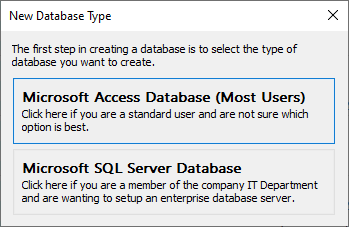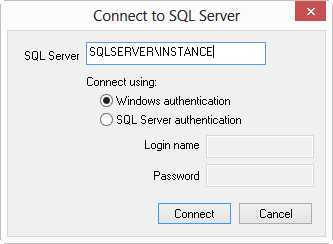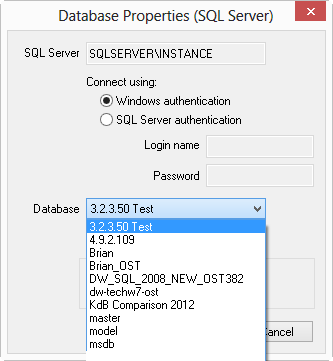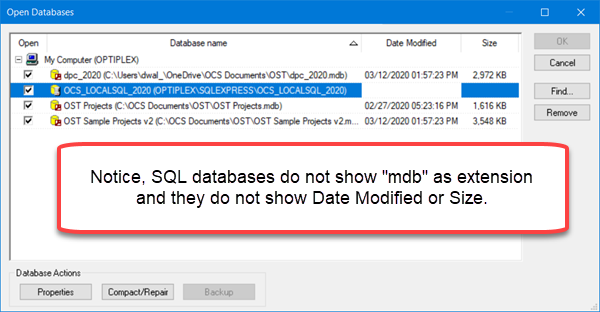| |
| |
On-Screen Takeoff - 20.02.02 Connecting to a Microsoft SQL Database - OST
| Views: 1080 Last Updated: 12/17/2024 12:30 pm |
0 Rating/ Voters
|
     |
| Be sure to rate this article 5 Stars if you find it helpful! |
To open and work in an SQL-type database, you need to tell OST the Server Name, enter in your login information, and then select the Database from a list.
In the Open Databases dialog box, use the Find... function to connect to an SQL-type Database.
Connecting to a Microsoft SQL database
To "Find" an Access database stored someplace other than the "database" folder:
- Right-click anywhere in the Bids Tab and select Open, or
- Click the Open icon,
 on the Main toolbar, or on the Main toolbar, or - Click File > Open
The Open Databases dialog box opens
- Click the Find... button
- Select 'Microsoft SQL Server'
- Click OK

The Connect to SQL Server dialog box opens.

- Type the name of the SQL Server in the SQL Server field (you will need to contact your SQL Server or Network Administrator for assistance, this is not something On Center furnishes). If you're connecting to a "Named Instance", type in the name of the server followed by the instance, for example: "sqlserver\instance"
Each user must type the name of the server exactly the same, case matters. We recommend using all lower-case letters, just to be consistent. When users type the server name differently, they will cause connection issues for interactive bids. - Select appropriate server authentication under "Connect using" (this also is determined by your SQL Server Administrator, please contact him or her with questions on how you should connect to the server)
- Windows authentication passes the Windows login information to SQL
- SQL Authentication requires a Login Name and Password provided by the SQL Server Administrator (recommended)
- Click Connect - the program attempts to connect to the SQL Server, then displays all databases found on that server (until a database is opened, On-Screen Takeoff/Quick Bid have no way of knowing if it is an OST/QB database - so it is important that your Organization names its databases logically):

- Select a database to open (this list shows every database stored in that SQL Server, not just OST database, which is why including "OST" in your database name is so important)
- Click OK
The database is now listed in the Open Databases dialog box with a check mark:

- Click OK to close the Open Databases dialog box and return to the Bids Tab
All databases checked in the Open dialog are displayed on the Bids Tab.
SQL databases do not show a Date Modified or Size entry, nor can they be 'backed up' using OST.
|
|
|
